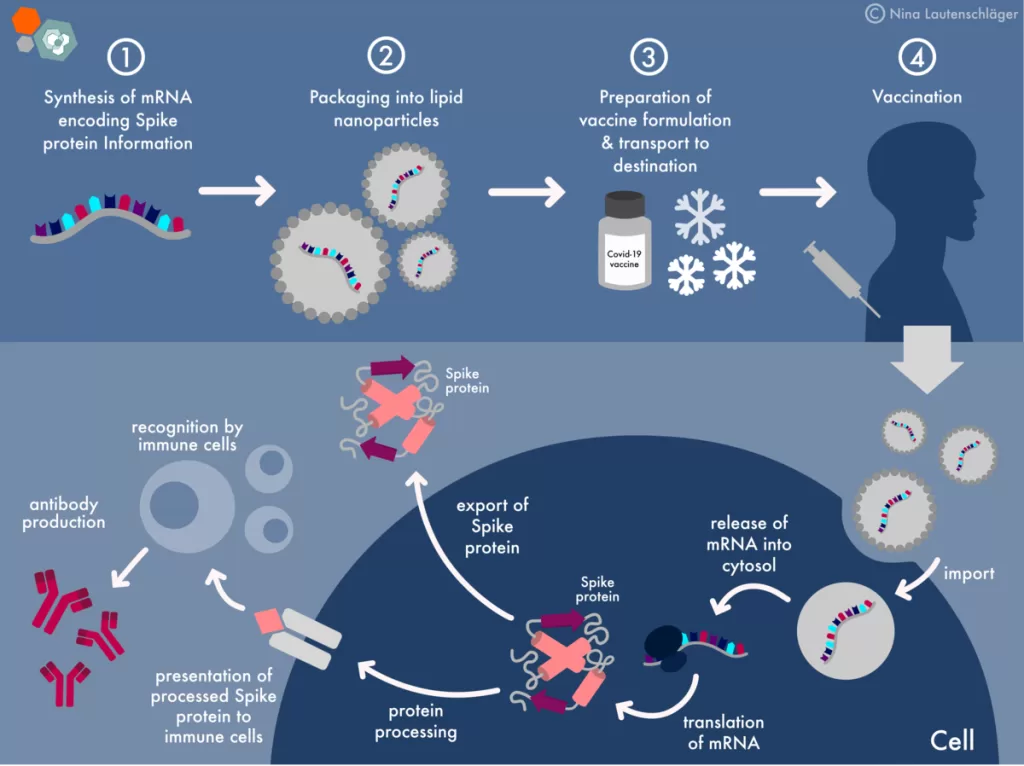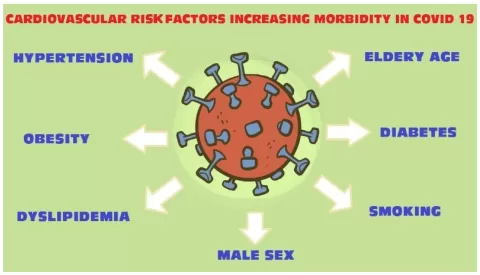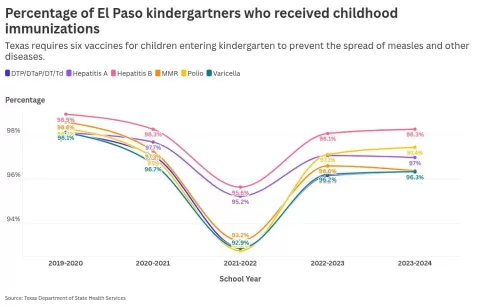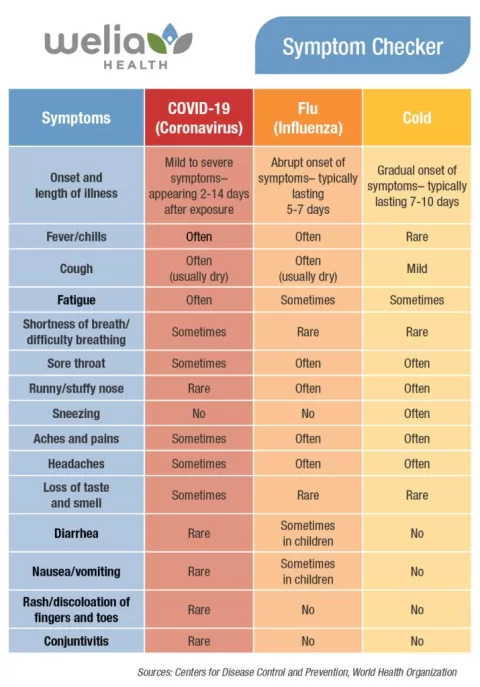The COVID-19 mRNA vaccine has played a pivotal role in combating the global pandemic, but emerging studies are shedding light on potential side effects, particularly among adolescents. Recent research indicates a concerning association between the vaccine and myocardial scarring, especially in young males who experienced vaccine-associated myocarditis. These findings raise alarms regarding heart health, as myocardial scarring could have long-term implications that extend beyond immediate symptoms. Although the initial reactions to the vaccine are generally mild, understanding the nuances of these vaccine side effects is crucial for public health conversations. As COVID-19 vaccine research continues to evolve, the focus on cardiac risks in younger populations is becoming increasingly important.
The messenger RNA (mRNA) vaccines against coronavirus disease 2019 (COVID-19) have been instrumental in mitigating the pandemic’s impact. However, recent analyses have revealed potential cardiac implications, particularly myocardial damage observed in younger individuals. This phenomenon, often referred to as vaccine-associated myocarditis, underscores the importance of monitoring heart-related health consequences in vaccinated adolescents. As these vaccines gain further scrutiny, understanding their association with serious side effects, such as myocardial scarring, is crucial for guiding vaccination strategies. The ongoing research into the long-term effects of these vaccines aims to inform healthcare practices and ensure the safety of the younger population.
Understanding the Risks of COVID-19 mRNA Vaccine and Myocarditis
The COVID-19 mRNA vaccine, while a groundbreaking tool in combating the pandemic, has sparked concern over its association with myocarditis, particularly in young males. Studies have shown that adolescents who receive these vaccines can experience mild, albeit serious, side effects—one of them being myocarditis. This inflammatory heart condition is characterized by inflammation of the heart muscle, which can lead to various complications, including myocardial scarring. It is crucial for health professionals and families to acknowledge these potential risks when considering vaccination.
Recent research highlights that the prevalence of myocarditis following mRNA vaccination seems especially pronounced in the adolescent demographic, particularly post-second dose. With around 72% of myocarditis cases showing detectable evidence of myocardial edema and late gadolinium enhancement (LGE) through cardiac magnetic resonance imaging, the implications for heart health in this age group are profound. Parents should be aware of the symptoms that can arise after vaccination, such as chest pain and elevated troponin levels, and know when to seek medical attention.
Long-term Consequences of Vaccine-Associated Myocardial Injury
The long-term consequences of COVID-19 vaccine-associated myocarditis present a significant area of concern for researchers and healthcare providers alike. While many adolescents exhibit mild symptoms initially, the presence of myocardial scarring discovered through advanced imaging techniques raises questions about the risks of arrhythmia and heart failure later in life. The lack of clear guidelines for long-term cardiovascular monitoring post-vaccination underscores the need for ongoing research to understand the full spectrum of cardiac impacts associated with mRNA vaccines.
Older males have been identified as being at a higher risk for severe manifestations of myocarditis following vaccination. Interestingly, the data collected from the Myocarditis After COVID Vaccination (MACiV) study indicates that despite the serious nature of the condition, none of the patients required a heart transplant or suffered fatal outcomes. However, with a growing population of adolescents receiving COVID-19 mRNA vaccines, it is imperative to investigate the correlation between myocarditis and heart health outcomes in this group to develop preventive strategies.
Comparing Myocarditis and Multisystem Inflammatory Syndrome in Children (MIS-C)
Myocarditis and multisystem inflammatory syndrome in children (MIS-C) are two serious inflammatory conditions that have emerged in the context of COVID-19. While both can occur in young patients, their underlying mechanisms and implications differ significantly. MIS-C, often a delayed response to COVID-19 infection, presents with systemic inflammation affecting multiple organ systems, whereas myocarditis is a localized heart inflammation that can follow vaccination. Understanding these distinctions is crucial for healthcare practitioners when managing care for adolescents.
Notably, research indicates that patients suffering from myocarditis post-vaccination tend to experience milder clinical symptoms and are less likely to suffer severe systemic effects compared to those diagnosed with MIS-C. The comparative study suggests that while myocarditis can lead to long-term cardiac complications like scarring and arrhythmias, MIS-C often necessitates more intensive care and has a higher association with systemic inflammatory markers. This reinforces the idea that thorough research and monitoring are essential to determine the full impact of both conditions on long-term health outcomes in young patients.
Cardiac Imaging and Its Role in Assessing Vaccine-Associated Myocarditis
Cardiac imaging plays a pivotal role in diagnosing and monitoring myocarditis, especially following COVID-19 mRNA vaccination. Techniques such as cardiac magnetic resonance (CMR) imaging provide valuable insights into the extent of myocardial injury, with specific focus on identifying LGE, which indicates myocardial scarring. These imaging modalities not only help confirm cases of myocarditis but also guide treatment options and post-vaccination cardiac care strategies.
In the context of the recent MACiV study, CMR has proven instrumental in identifying myocardial edema and assessing the severity of cardiac involvement in young individuals diagnosed with myocarditis. Enhanced understanding of imaging results has improved clinical outcomes, allowing for tailored therapies and closer monitoring of cardiac function. As further studies elucidate the implications of vaccine-associated myocarditis, the integration of advanced imaging techniques will remain crucial for the ongoing assessment of heart health in adolescents.
Potential Implications of Myocardial Scarring on Future Heart Health
The findings related to myocardial scarring in adolescents who have experienced vaccine-associated myocarditis bring forth critical considerations regarding future heart health. Myocardial scarring, identified through techniques like LGE in CMR scans, could potentially predispose these young individuals to various cardiovascular issues in adulthood. This might include heightened risks of heart failure, arrhythmias, and potentially lifelong health consequences, suggesting a need for continuous cardiovascular evaluation.
Moreover, the variability in individual responses to vaccination means that understanding the cumulative effects of myocardial scarring in different populations will be essential. Given that adolescents are still in pivotal stages of growth and development, it is vital to closely monitor their heart health and implement strong follow-up programs to identify any long-term sequelae from vaccine-related myocarditis.
Understanding Vaccine Side Effects in Context
The COVID-19 mRNA vaccine has provided extraordinary benefits during the pandemic, yet, like any medical intervention, it is not without its side effects. Side effects such as fever, fatigue, and, in rare cases, myocarditis or other cardiac concerns must be monitored and communicated effectively to potential vaccine recipients and their families. Ensuring that the public is informed about what to expect post-vaccination can help mitigate fears and improve vaccine confidence.
Research into vaccine side effects emphasizes the importance of context. Each individual’s risk factors, including age, gender, and preexisting health conditions, can influence the likelihood and severity of side effects. As mRNA technology continues to be embraced in vaccines, understanding these nuances will be vital to promoting public health and ensuring the safety of young populations who are increasingly becoming the focus of vaccination efforts.
Health Guidelines for Families Considering Vaccination
As discussions about COVID-19 mRNA vaccination among young people continue, it is essential for families to have access to clear health guidelines. Parents should initiate conversations with their healthcare providers, considering both the benefits of vaccination—such as protection against COVID-19—and the potential risks, including myocarditis. An informed decision involves weighing the likelihood of post-vaccination complications against the severe outcomes associated with COVID-19 in children.
Additionally, families should be apprised of the importance of monitoring for any symptoms post-vaccination. Early identification of myocarditis symptoms can lead to prompt medical evaluation and management. Consequently, establishing a strong line of communication with healthcare professionals can empower families to make well-informed decisions and adhere to recommended follow-up protocols for cardiovascular health.
Future Directions in COVID-19 Vaccine Research
The emergence of myocarditis cases following COVID-19 vaccination has opened new avenues for research in vaccine safety and efficacy, particularly within younger demographics. Future research should focus on the long-term implications of myocarditis and myocardial scarring, aiming to understand the biological mechanisms involved and establish protocols for monitoring at-risk populations. The continuation of studies similar to those from the MACiV cohort will be vital in enhancing the understanding of vaccine-related cardiac effects.
Moreover, there is an urgent need for healthcare systems to integrate findings from ongoing research into public health policies, ensuring that vaccination programs can adapt based on emerging evidence. This adaptability will be critical in enhancing vaccine safety profiles, reassuring families, and navigating the complexities of public vaccination strategies moving forward.
Creating Awareness Around Adolescent Heart Health Post-Vaccination
In light of findings indicating a link between COVID-19 mRNA vaccination and myocarditis, raising awareness about adolescent heart health has become increasingly important. Healthcare providers, schools, and communities must collaborate to educate young individuals and their families about the signs and symptoms of myocarditis, as well as the importance of regular monitoring, especially for those who have received the mRNA vaccine.
Creating educational programs that inform participants about cardiovascular health, particularly in the context of recent research findings, can empower families to advocate for their health. Engaging adolescents in discussions about their health can encourage a proactive approach to recognizing symptoms and seeking care, ultimately fostering a more informed and health-conscious generation.
Frequently Asked Questions
What are the potential side effects of the COVID-19 mRNA vaccine, particularly related to myocarditis in adolescents?
The COVID-19 mRNA vaccine has been linked to myocarditis, particularly in adolescents and young males. While most cases present mild symptoms such as chest pain and elevated troponin levels, the concern lies in the potential for long-term myocardial scarring that could affect heart health. It is crucial to monitor any cardiac symptoms post-vaccination and consult healthcare providers for evaluation.
How does the COVID-19 mRNA vaccine impact heart health in young adults?
Research indicates that the COVID-19 mRNA vaccine may pose a risk of myocarditis, especially in young males following the second dose. This can lead to myocardial scarring detectable via cardiac imaging. While most patients experience mild outcomes, ongoing studies are necessary to fully understand the long-term implications for heart health in this population.
Is there evidence of myocardial scarring after COVID-19 mRNA vaccination in adolescents?
Yes, a recent study has shown a notable prevalence of myocardial scarring in adolescents diagnosed with vaccine-associated myocarditis following the COVID-19 mRNA vaccination. Through advanced imaging techniques, researchers found that many affected individuals exhibited late gadolinium enhancement, indicating potential scarring and the need for continued cardiac monitoring.
What clinical findings are associated with myocarditis after the COVID-19 mRNA vaccine in young individuals?
Clinical findings associated with myocarditis following the COVID-19 mRNA vaccine predominantly include chest pain, elevated troponin levels, and abnormal electrocardiograms. Additionally, cardiac imaging often reveals signs of myocardial edema and scarring, raising concerns about long-term cardiovascular outcomes.
What ongoing research is being conducted on COVID-19 mRNA vaccine and myocarditis?
Ongoing research aims to clarify the long-term effects of vaccine-associated myocarditis among recipients of the COVID-19 mRNA vaccine. Studies like the MACiV multicenter study are investigating the prevalence of myocardial scarring and its implications for adolescent heart health, as well as comparing these outcomes to other complications such as MIS-C.
How does vaccine-associated myocarditis compare to other post-COVID-19 complications like MIS-C in children?
Vaccine-associated myocarditis (C-VAM) typically presents milder clinical symptoms compared to multisystem inflammatory syndrome in children (MIS-C). C-VAM patients are usually older and predominantly male, have less systemic inflammation, and show different patterns of myocardial scarring on cardiac imaging when compared to MIS-C patients, who generally have a more severe inflammatory response.
| Key Point | Details |
|---|---|
| Link to Myocarditis | Higher prevalence of myocardial scarring in young males post COVID-19 mRNA vaccination. |
| Study Overview | The MACiV multicenter study tracked cardiac issues post vaccination among those under 30. |
| Symptoms | Symptoms appear after the second dose; include elevated troponin levels and chest pain. |
| Key Findings | 72% of patients showed late gadolinium enhancement on CMR, indicating myocardial scarring. |
| Demographics | 95% of C-VAM patients were vaccinated with Pfizer-BioNTech. |
| Comparison with MIS-C | C-VAM patients were older, predominantly male, and exhibited less systemic inflammation than MIS-C patients. |
| Hospitalization | 90% of patients required hospitalization; only 2% needed mechanical support. |
| Outcomes of Concerns | Presence of myocarditis raises questions about long-term health effects. |
Summary
The COVID-19 mRNA vaccine has been linked to an increase in myocardial scarring in adolescents and young adults, raising important concerns about potential long-term health effects. A recent study reveals a notable prevalence of these heart-related issues, particularly in young males, following vaccination. Symptoms, which typically emerge after the second dose, include chest pain and elevated troponin levels, leading to increased hospitalizations, though most required only short stays. Notably, findings indicate that myocardial scarring may pose risks for future cardiovascular incidents. Ongoing research is imperative to understand the implications of COVID-19 mRNA vaccine-related myocarditis, emphasizing the need for continued monitoring and support for affected populations.
The content provided on this blog (e.g., symptom descriptions, health tips, or general advice) is for informational purposes only and is not a substitute for professional medical advice, diagnosis, or treatment. Always seek the guidance of your physician or other qualified healthcare provider with any questions you may have regarding a medical condition. Never disregard professional medical advice or delay seeking it because of something you have read on this website. If you believe you may have a medical emergency, call your doctor or emergency services immediately. Reliance on any information provided by this blog is solely at your own risk.







